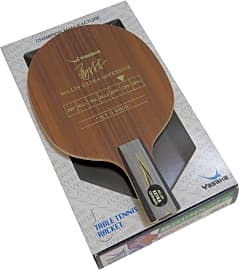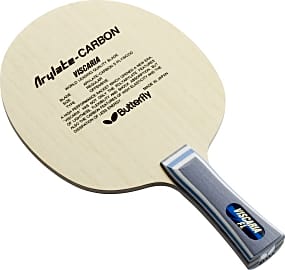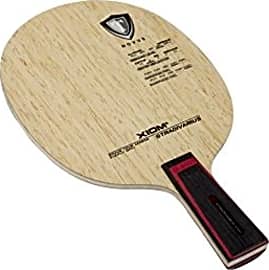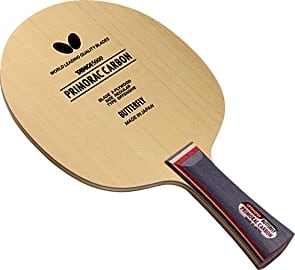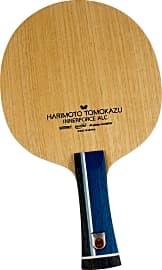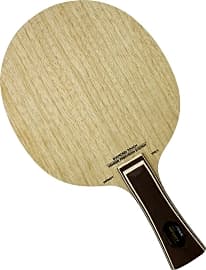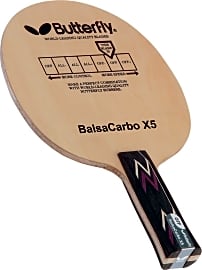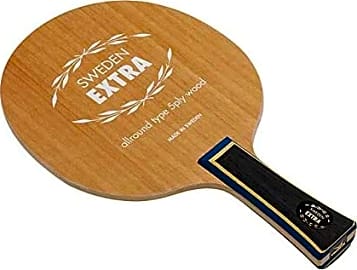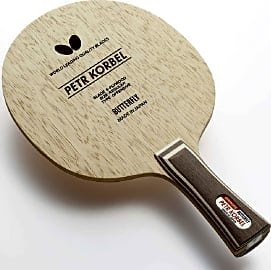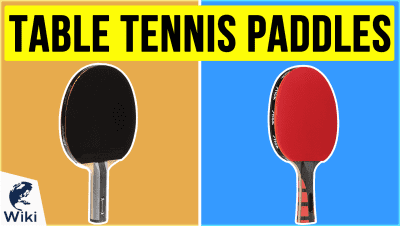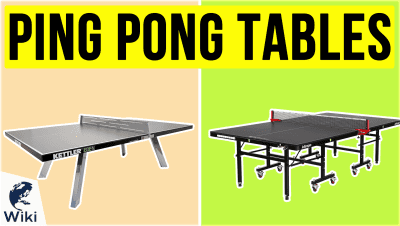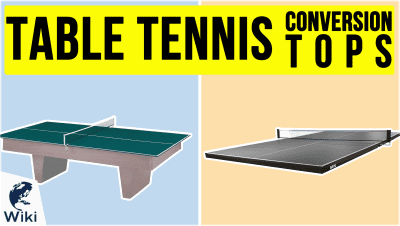The 10 Best Table Tennis Blades

This wiki has been updated 36 times since it was first published in October of 2016. If your game has graduated from Ping-Pong in the garage to more competitive arenas, you may be interested in our selection of table tennis blades. As with any sport, the right equipment can make all the difference, and creating a custom racket to suit your personal style can deliver an improvement in speed, control, and spin. We've included a mix of intermediate and pro-level options. When users buy our independently chosen editorial choices, we may earn commissions to help fund the Wiki.
Editor's Notes
November 13, 2020:
We had to remove the Ariex Excellent, the Stiga Clipper CR WRB, and the DHS Hurricane H-WH Short CS due to availability concerns. In place of the Stiga Clipper CR WRB we added the Stiga Infinity VPS V, which, having especially hard outer veneer layers, is best for players who want to generate lots of topspin. We also added the Yasaka Sweden Extra, a 5-ply option better for those with more all-around play styles who want to hold onto a good amount of control. Finally, for those who care about control more than speed, we added the Butterfly Harimoto Innerforce ALC, whose use of ALC fiber padding keeps the paddle in contact for the ball for as long as possible so you can guide it wherever you want it to go.
Casual players who don't want to spend the money and time to design a custom paddle should check out our list of table tennis paddles, which already have rubber attached. Of course, if you're new to the game, you may also be on the lookout for ping pong tables.
April 11, 2019:
When you get serious about table tennis, it is important to get high-quality equipment that will help you improve your game. If you have only used big box store paddles up until now, you may not be familiar with most, if any, of the names on our list, but mention that you are using any of these brands to an experienced player, and they will immediately look at you with newfound respect. If it is your first foray into competition blades, you might want to start off with one of the more moderately-priced options, such as the DHS Hurricane H-WH Short CS. It is well-made and will offer you considerably more ball control than you are used to.
Of course, once you realize how much difference a good paddle can make in your game, you may immediately want to move up again and buy one of the pro-quality options, such as the Butterfly Timo Boll ZLC-FL, Butterfly Viscaria-FL, Ariex Excellent. These first two are both well-suited to aggressive players, while the last is better for someone who wants explosive rebound on defensive hits and likes to pick and choose their exact shot placement. If you feel you are on top of your ball control and need something that can really up your velocity, the Xiom Stradivarius ST is worth taking a look at. Just don't be surprised if your shots go a bit wild until you get used to playing with it.
The Yasaka Ma Lin Extra Offensive is somewhat unusual in that it has a pretty wallet-friendly price, yet has been seen at the Olympics in the hands of one of the best players in the world. It is definitely competition ready and is probably the single best option for a serious player who can't spring for a top of the line model.
A Brief History Of Table Tennis
The first modern racket followed not long after, and it was basically a piece of rubber stapled to a wooden paddle.
Whether you call it table tennis, ping-pong, or miniature whacky-ball (is that just me?), there are few better ways to spend an afternoon than hitting that little ball back and forth. While the game is relatively young, it has managed to pack quite a bit of excitement into its brief existence.
As you might expect, the sport began when a couple of lawn tennis players in the 1880s had to cancel a match due to weather. Unwilling to give up on their leisure time, they devised a way to bring their game indoors, using two books as rackets to hit a golf ball over a small net.
This new sport quickly became popular as an after-dinner parlor game in Britain, and the name "ping-pong" was trademarked by the British manufacturer J. Jacques and Son. This strange name was a reference to the sound the ball made when hitting the expensive equipment, and the trademark was sold to the U.S.-based game manufacturer Parker Bros. in the early 20th century.
In 1901, table tennis aficionado James Gibb discovered that celluloid balls were an excellent fit for the game. The first modern racket followed not long after, and it was basically a piece of rubber stapled to a wooden paddle.
Tournaments had been growing in popularity by this time, and unofficial world championships were held in 1902. The International Table Tennis Federation was founded in 1921, and the first recognized championship event happened in 1926.
Different countries had remarkably dissimilar reactions to the game. While it was popular in the United States and Britain, the Chinese took to it with an incredible fervor. The Soviets, on the other hand, discouraged participation in the sport, preferring instead to emphasize team-based hobbies.
In the 1950s, manufacturers began placing a thin layer of sponge underneath the rubber on the racket, allowing for increased spin and speed. In fact, the game began to get so fast that there had to be conscious attempts to slow it down.
Table tennis was added to the Olympics in 1988, and those finals drew an estimated television audience of two billion people. The game continues to be hugely popular, especially in Asia and in the break rooms of hip Silicon Valley startups, and its following should only continue to grow in the years to come.
Choosing The Right Table Tennis Blade
If you're serious enough about your game to buy a custom blade, then there are a few things you should consider before making a purchase.
First off, consider the material that your blade will be made out of, while also keeping your proficiency level in mind. By rule, all paddles must be at least 85 percent wood, but the remaining amount can be constructed of materials like carbon or glass fiber. These blades will definitely up your game, but unless you're an advanced player already, you'll likely be spending a significant amount of money to attain a negligible amount of improvement.
By rule, all paddles must be at least 85 percent wood, but the remaining amount can be constructed of materials like carbon or glass fiber.
The style is another important consideration, and your grip will likely dictate the best blade for you. As you might expect, the western-style blade is best suited for players that use the western, or handshake, grip. If you use a pen grip, however, then the penhold-style blade will be much more useful, but it's not the best choice for beginning players.
Finally, your style of play should also factor into your decision. If you prefer to be on the attack, then a blade made of harder wood will be right up your alley, as it will allow you to generate significant power on your shots. Conversely, a softer wood is better for defensive players, as it enables them to soften the blow of power shots and place the ball with greater accuracy. If you don't have a particular style, then you should likely stick with an all-around blade, which falls somewhere between the other two blade styles.
Regardless of which blade style you choose, the mere fact that you've put thought into the purchase will put you ahead of many recreational players. With the right equipment and plenty of practice, you'll soon be a menace on the tables — especially if you can find a paddle that has a completely different type of blade hidden in the handle.
Table Tennis Tips For Beginners
If you're just getting your feet wet in ping-pong, watching the pros can feel pretty useless. The ball whizzes by so fast, it's like they're playing a completely different game entirely. Luckily, most players you'll face aren't nearly that good. With these tips up your sleeve, you'll soon be able to hold your own against any of the hotshots in your neighborhood.
Each paddle comes with its own subtle differences, and you'll want to train with yours until it's as familiar as your own hand.
First off, once you decide on a blade, use it exclusively. Each paddle comes with its own subtle differences, and you'll want to train with yours until it's as familiar as your own hand. Breaking this continuity with community paddles can set your game back faster than you realize.
Learning to identify spin is also important. If your opponent swings from low to high, then they'll be applying topspin on the ball, while a high-to-low swing will cause backspin. Knowing this can enable you to position yourself favorably for shots before they bounce.
You'll want to keep a short, compact swing, as longer swipes slow your reaction times and increase your likelihood of messing up. If you play other "swing" sports, like baseball or hockey, this might require unlearning some techniques that have already become ingrained in your psyche.
Finally, really focus on your serve when practicing. Keep your wrist loose and flexible, work on adding spin, and emphasize setting up your next shot more than trying to get an ace. If you get a killer serve down, you'll be nearly unstoppable at the table.
Once you've mastered these basic techniques, you'll be ready to face any challenger. Just remember the number one rule of table tennis: if you're losing a match that you bet a lot of money on, throw your paddle at the other guy really hard and then run for your life.


